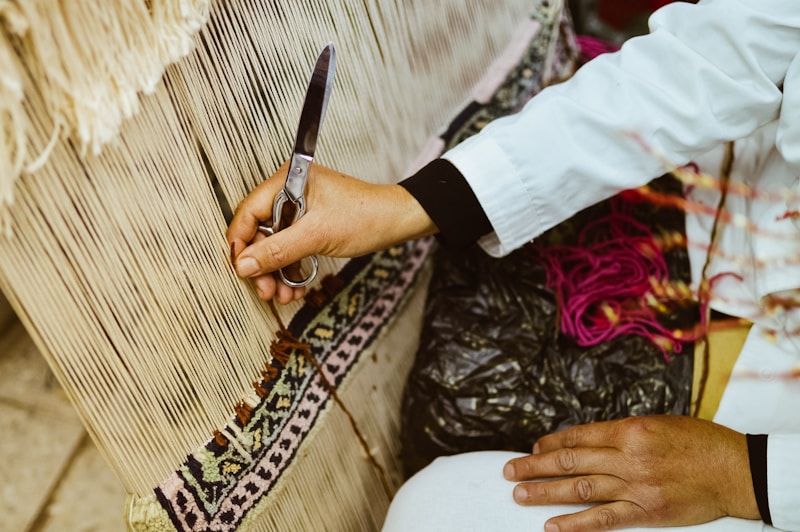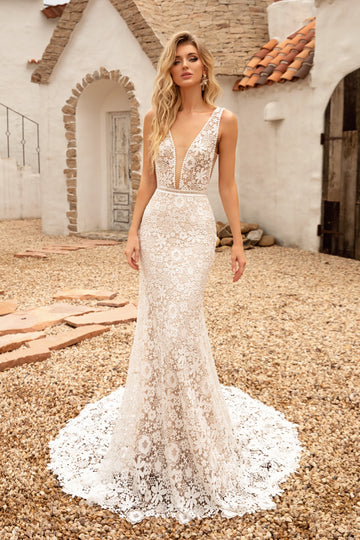How to Incorporate Cultural Fabrics into Your Wedding Dress Design
How to Incorporate Cultural Fabrics into Your Wedding Dress Design
Weddings are a celebration of love and unity, and increasingly, they are a reflection of individual and cultural identities. One of the most beautiful ways to honor your heritage is by incorporating cultural fabrics into your wedding dress design. In this article, we will explore how you can seamlessly blend traditional textiles with modern design elements, offering tips and advice along the way. Additionally, we will provide examples of various cultural fabrics that are popular for weddings, as well as FAQs related to this exciting topic.
The Significance of Cultural Fabrics in Wedding Dresses
Cultural fabrics have a unique ability to tell stories, express identity, and connect individuals to their roots. When choosing to incorporate cultural fabrics into your wedding dress design, you are not just selecting a material; you are weaving in history, tradition, and personal significance. Here are some reasons why cultural fabrics are significant:
- Symbolism: Fabrics can represent love, commitment, and familial ties.
- Heritage: They celebrate your cultural background and personal history.
- Uniqueness: Infusing traditional textiles ensures your dress is one-of-a-kind.
Exploring Various Cultural Fabrics
There are countless fabrics from around the world that can be beautifully incorporated into wedding dress designs. Below are some popular cultural fabrics and their characteristics:
| Fabric Type | Origin | Characteristics | Usage in Wedding Dress |
| Silk | China, India | Luxurious, smooth, and elegant | Flowing gowns, sashes, and linings |
| Satin | France | Glossy finish, rich texture | Classic ball gowns and modern silhouettes |
| Brocade | Italy | Heavy, ornate, often patterned | Statement dresses and detailed accents |
| Kente Cloth | Ghana | Colorful, symbolic patterns | Train embellishment and bridal wraps |
| lace | Various (e.g., Belgium, France) | Delicate, intricate designs | Overlays and detailing |
Each type of fabric comes with its own history and meaning. This makes them not only a fashion choice but an opportunity to tell your love story through design.
Integrating Cultural Fabrics into Your Design
Now that we've explored the types of cultural fabrics, let's delve into how you can integrate them into your wedding dress design:
1. Choose the Right Fabric
When selecting a fabric, consider its texture, weight, and how it will drape on your body. It's essential to pick a fabric that complements your body type and the style of your wedding. If you're going for an elaborate gown, fabrics like brocade or silk may work well, while something simpler may benefit from lace or cotton.
2. Mix and Match
Don't feel confined to one type of fabric. Consider combining different cultural fabrics in your design. For example, a silk dress can be adorned with Kente cloth accents or a lace overlay. This combination not only enhances the visual appeal but also adds depth and meaning to your dress.

3. Custom Prints and Coordinates
Many designers now offer the option to create custom prints that reflect your cultural background. You can collaborate with them to create unique designs that align with your vision.
4. Accessories and Embellishments
If a full cultural fabric dress feels overwhelming, consider incorporating them through accessories. A bridesmaid dress, a stole, or even a belt can beautifully add cultural references and tie in various elements of your wedding theme.
5. Work with a Designer
If you're unsure how to begin, working with a designer who specializes in cultural or bespoke wedding dresses can be incredibly beneficial. They can guide you in fabric selection and help bring your vision to life.
Future Trends in Cultural Fabrics for Weddings
As we move forward, more couples are embracing diversity in their wedding designs. The trend toward sustainable and ethically sourced fabrics is also gaining momentum. Here are some trends to keep an eye on:
- Renewed interest in traditional handweaving and textile artistry.
- Hybrid designs that blend traditional elements with contemporary styles.
- Greater appreciation for cultural storytelling through textiles.
Now is an exciting time to explore how cultural fabrics can resonate within this celebration of love, connecting you to your roots whilst showcasing your individuality.
Conclusion
Incorporating cultural fabrics into your wedding dress is not only a beautiful fashion choice but also a meaningful way to celebrate your heritage. By selecting the right fabrics, blending different textures, and possibly collaborating with a designer, you can create a wedding dress that is uniquely yours. Remember to embrace the significance of the fabrics you choose and the stories they tell, allowing your wedding day to reflect the beautiful tapestry of your life and experiences.
As you navigate through design choices, keep in mind the importance of authenticity and personal expression in your wedding dress. Consider consulting professionals in the field if you feel overwhelmed, and collaborate with your family to incorporate heirlooms or traditional elements. This way, your wedding dress will not only be a fashion statement but also a treasured piece of art that represents your journey.
Ultimately, your wedding day is about celebrating love. Incorporating cultural fabrics will not only elevate your design but also honor your story, creating a memory that lasts a lifetime.
